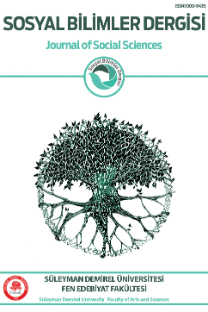Zeugma’dan Bir Geç Roma Definesi
___
ARSLAN, M. (1987). Taburabat definesi Arcadius devri sikkeleri, Anadolu Medeniyetleri Müzesi Yıllığı, 1986, 45-50.ARSLAN, M. (1989). Taburabat definesi Roma devri sikkeleri, Anadolu Medeniyetleri Müzesi Yıllığı, 1988, 156-167. (İngilizce özet)
ARSLAN, M. (1999). The Taburabat Hoard, C. S. Lightfoot (Ed.), Recent Turkish Coin Hoards and Numismatic Studies içinde (s. 43-55), Oxford.
CARSON, R. A. G. (1990). Coins of the Roman Empire, London&New York.
CARSON, R. A. G., HİLL P. V., KENT, J. P. C. (1989). Late Roman Bronze Coinage (LRBC II), London.
KENT, J. P. C. (1981). The Roman Imperial Coinage VIII. The Family of Constantine I. A. D. 337-364 (RIC VIII), London.
PEARCE, J. W. E. (1951). The Roman Imperial Coinage IX. Valentinian I – Theodosius I, (RIC IX), London.
KENT, J. P. C. (1994). The Roman Imperial Coinage X. The Divided Empire and the Fall of the Western Parts AD. 394-491 (RIC X), London.
SEEGER, A. (1976). A Hoard of Late Roman Bronze Coins, Coin Hoards, 2, 55-60.
THOMSEN, R. (1986). The Greco-Romen Coins. A. P. Christensen, R. Thomsen, G. Ploug (Ed.), Hama: foulles et recherches 1931-1938 III. 3: The Greco-Roman objects of clay, the coins and the necropolis içinde (s. 59-69), Copenhagen.
- ISSN: 1300-9435
- Yayın Aralığı: 3
- Başlangıç: 1995
- Yayıncı: Süleyman Demirel Üniversitesi, Fen-Edebiyat Fakültesi
Gülcan SARP, Kadir TEMURÇİN, Yolcu ALDIRMAZ
TRABZON DERNEKPAZARI YENİCE KÖYÜ’NDE TARİHİ AHŞAP BİR KÖPRÜ
998 ve 1112 Numaralı Tapu Tahrir Defterlerine Göre Siirt Vakıfları (1526-1566)
Fransız İhtilali’nin Osmanlı İmparatorluğu’na Etkileri
Kadir KASALAK, Şengül BÜYÜKBOYACI
Taşkın Risk Haritalarında AHP Yönteminin Uygulanması: Aksu Çayı Havzası Örneği
Psikoterapide Ciddi Bir Etik İhlal: Hasta ve Terapist Arasındaki Cinsel İlişki
